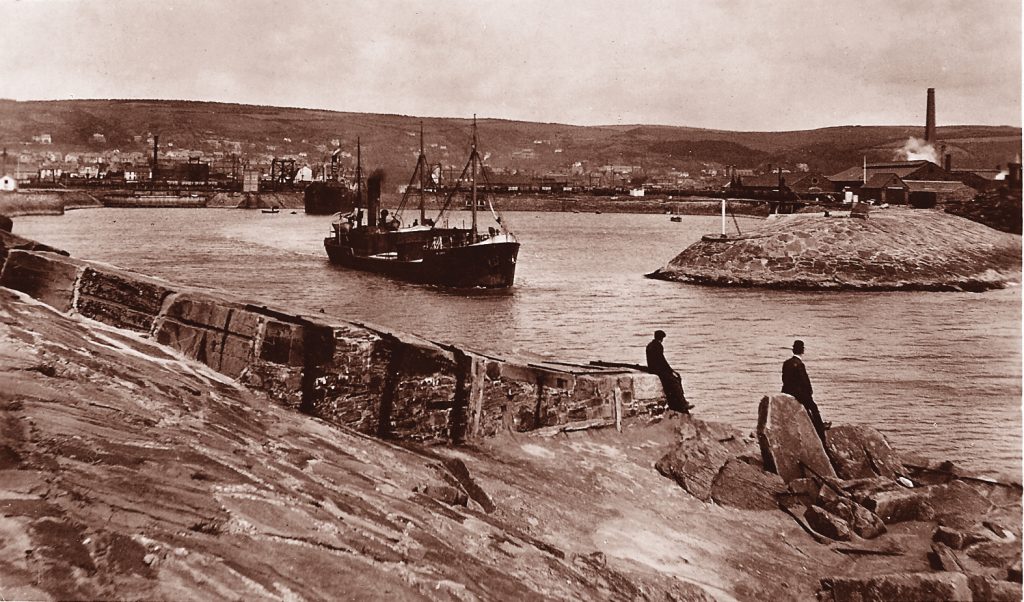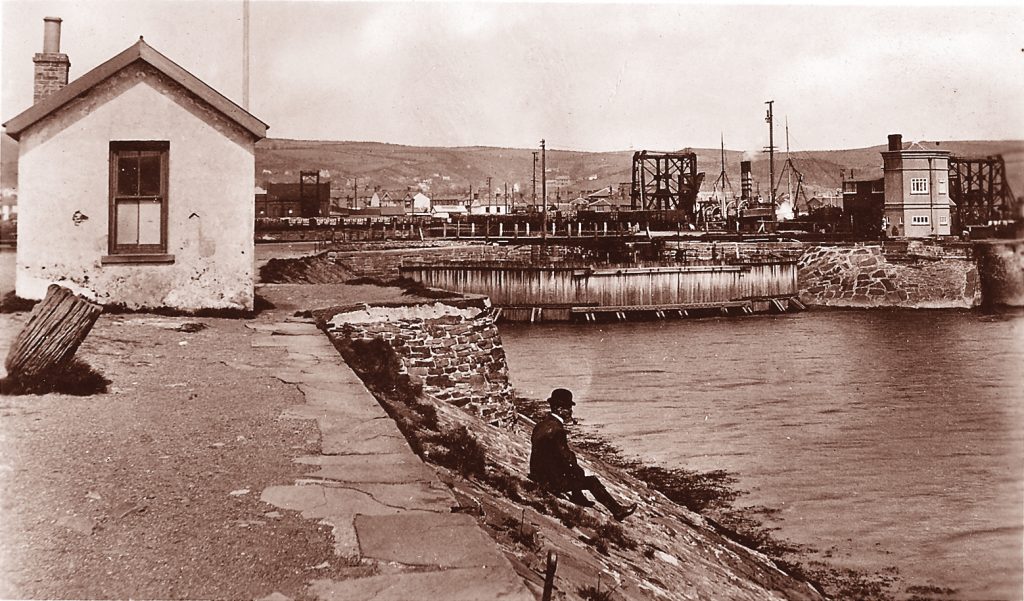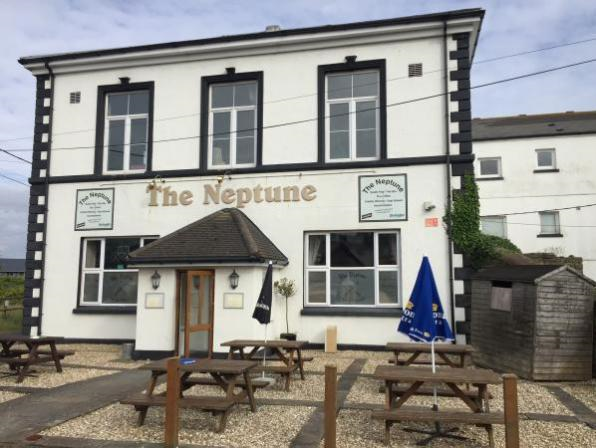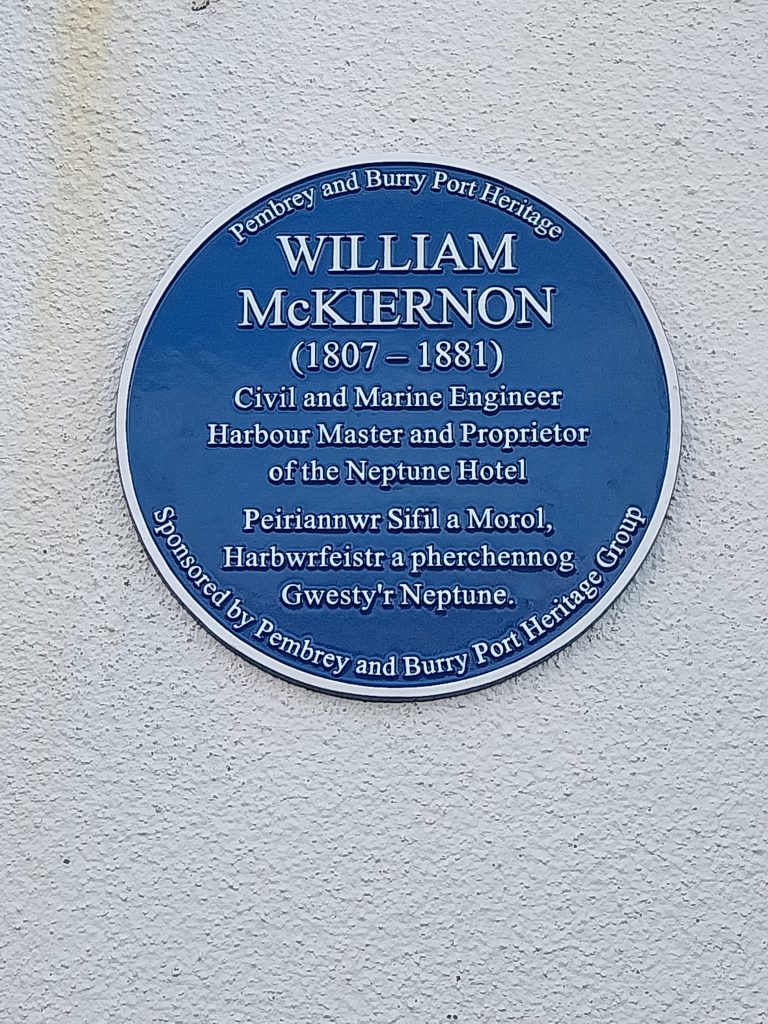William McKiernon 1807 – 1881


William McKiernon is one of the less well-known contributors to the history and heritage of the area, yet he left his mark as an engineer along the coast from Loughor to Kidwelly. Last month a plaque was erected to commemorate his work on the front of the Neptune Hotel in Burry Port. He was born in Shropshire in 1807 and came to Burry Port in 1830. A little-known engineer at first, during his time in Burry Port he did much to enhance his reputation and improve the developing town. He was known as a decisive man of energy and vision and was described by one historian as ‘a new star in the firmament’ at the time and by another “a very competent and versatile marine and civil engineer”. He lived in Burry Port with his wife Ann, whom he married on 21st January 1835 in Ellesmere, and they had four children
Following the new plans by Sir Edward Banks for a floating dock at Burry Port, McKiernon took the lead as a civil and marine engineer on the building of the inner harbour, supplying stone from his quarry above Cwm Capel (known as ‘Cwar Mac’) and transporting it down the existing tramroad. He was said to have been a good manager and a good business man and built houses for the growing population of workers in Burry Port. In addition he supervised the building of what became known as the Commissioner’s Bridge across the Gwendraeth river where there was an existing ford, making transport easier from Kidwelly and with sluices to stop flooding across the fields. With his expertise and supplies of stone from his quarry McKiernon built sections of the seawall between Llanelli and Burry Port when the South Wales Railway Company built its railway line from Swansea in 1852.
In 1842 McKiernon was appointed as the Superintendent and Harbourmaster for the Burry Port Dock Company and railway contractor employing 52 men. He also held the licence for the newly opened Neptune Hotel (October 1842) where he lived as the first proprietor of the hotel. It was described as “a commodious hotel erected for the accommodation of merchants, masters of vessels and others frequenting the harbour.” In a court report at the time one participant was heard to say: “Whenever you go to Burry Port, go to McKiernon’s Hotel” where things were carried out in an orderly and respectable manner.
The 1851 Census shows him as the proprietor of the hotel, which at the time held auctions of wrecked vessels and sales of second-hand barges, farming machinery and dockside equipment. It also served as an exchange where deals were struck and paid for.
McKiernon was a successful ship salvager. In December 1842 he salvaged a German ship – Die Gute Hoffrung – and part of its cargo included an 8ft marble statue for the King of Prussia. The statue was displayed in Pembrey before being returned to its rightful owner. At a public auction in 1848 he bought the wreck the Louisa, part of which was reputed to be buried 4 feet below the level of the sand. He skilfully salvaged the ship, towed it into Burry Port harbour, along with 50 tons of cargo which was said to be worth £1,000. As Harbour Superintendent with access to railway workers he did this with the assistance of 100 men from the railway company.
He was a resourceful Harbour Master and The Cambrian newspaper of 20th June 1851 reported how his quick action, when he saw distress signals from the brig Sea Adventure, avoided loss of life and enabled the ship to be brought safely into Burry Port Harbour. Huskisson Row (off Station Road and long demolished) was said to be named after the barque Huskisson salvaged in 1853 by McKiernon, the timbers of which built these houses and is to be allegedly found in many others in Burry Port.
Fierce storms in December 1860 resulted in the Loughor Bridge needing to be rebuilt. William McKiernon was chosen to do this as he was respected for his skill and knowledge in solving difficult engineering problems in the Burry Estuary
After thirty years William McKiernon left Burry Port for Swansea but he returned to Burry Port in old age and the 1881 Census describes him as a retired civil engineer living with his daughter Elizabeth, and son in law Richard Williams, the postmaster, at 74 Station Road. He died in December 1881 and is buried at Pembrey church.
Sources
1. Pembrey and Burry Port, Their Harbours, Shipwrecks and Looters, John A Nicholson, Llanelli Borough Council.
2. The Burry Port & Gwendreath Valley Railway and its Antecedent Canals, Vol.1 The Canals,
Raymond E Bowen, Oakwood Press 2001
3. The Burry Port & Gwendreath Valley Railway and its Antecedent Canals, Vol.2 The Railway and Dock, R W Miller, Oakwood Press, 2009.
4. 1841, 1851, 1881 Census information 5. Cambrian Newspaper, 1851.
ELLEN DAVIES Latest version January 2023


